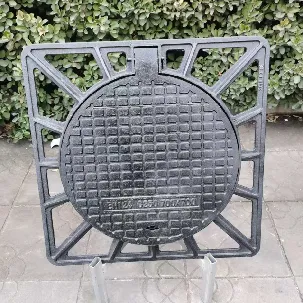Creative Designs for Wall Bollards and Their Practical Applications
The Importance of Wall Bollards in Urban Design
In modern urban design, the safety and efficiency of public spaces have become paramount. One structural element that plays a crucial role in enhancing both aesthetics and security is the wall bollard. These sturdy, vertical posts are not just functional; they are an essential part of city infrastructure that helps to protect pedestrians and buildings while offering a versatile design option that can complement various architectural styles.
Definition and Purpose
Wall bollards are short, sturdy vertical posts installed at strategic locations, usually adjacent to walls, sidewalks, or driveways. Their primary purpose is to prevent vehicles from encroaching on pedestrian areas. By creating a physical barrier, wall bollards help to guide traffic, deter unauthorized access, and protect vulnerable areas from potential vehicular impact. This is particularly important in urban settings where pedestrian traffic is high, and the risk of accidents involving vehicles can be significant.
Safety and Security
The implementation of wall bollards significantly enhances safety for pedestrians. For instance, in busy shopping districts or near public transport stations, wall bollards act as a buffer between vehicles and pedestrians, reducing the likelihood of accidents. They are especially important in areas where the congestion of people and cars is common. Additionally, wall bollards can serve to protect crucial infrastructures, such as building facades and outdoor seating areas, from errant vehicles.
In recent years, the need for enhanced security has led to the development of reinforced bollards designed to withstand high-impact collisions. These security bollards are often used in sensitive locations, such as government buildings, embassies, and public event venues, where the risk of terrorist attacks is higher. By installing strong, impact-resistant wall bollards, city planners can maintain the integrity of both the structures and the safety of individuals in the vicinity.
Aesthetic Appeal
wall bollards

While safety is a primary concern, the aesthetic appeal of wall bollards should not be overlooked. Available in various styles, materials, and colors, wall bollards can serve as decorative elements that enhance the overall urban landscape. From sleek, modern designs to classic, ornate styles, these structures can harmonize with the surrounding architecture, reinforcing the character and identity of a neighborhood.
Moreover, wall bollards can be creatively incorporated into landscaping. For example, they can be wrapped in greenery or adorned with lighting to create inviting public spaces that encourage social interaction. By using wall bollards as design elements, cities can simultaneously promote safety and foster a sense of community.
Environmental Considerations
Sustainability is increasingly becoming a focus in urban design, and wall bollards are no exception. Many manufacturers now offer eco-friendly options made from recyclable materials or those that serve dual purposes—like solar-powered lighting bollards that illuminate pathways at night. By selecting sustainable materials and designs, cities can contribute to environmental preservation while maintaining safety and aesthetics.
Versatility and Adaptability
Wall bollards are incredibly versatile. They can be used in various applications beyond pedestrian protection. For instance, they can be used in parking lots to define boundaries or to create dedicated cycling lanes, thereby improving traffic management. Their adaptability to different environments—from parks to commercial districts—makes them a popular choice among urban planners.
Conclusion
In conclusion, wall bollards are more than mere obstacles on city streets; they are essential components of urban design that enhance safety, security, and aesthetics. As cities continue to evolve, the role of wall bollards will become increasingly critical in managing pedestrian traffic, safeguarding infrastructure, and contributing to the overall beauty of the urban landscape. Their adaptability, coupled with an emphasis on sustainability, ensures that wall bollards will remain a relevant and valuable asset in the cities of the future. Urban designers, city planners, and safety officials must continue to recognize their importance and invest in innovative designs to create safer, more engaging public spaces for all.
-
The Smarter Choice for Pedestrian AreasNewsJun.30,2025
-
The Gold Standard in Round Drain CoversNewsJun.30,2025
-
The Gold Standard in Manhole Cover SystemsNewsJun.30,2025
-
Superior Drainage Solutions with Premium Gully GratesNewsJun.30,2025
-
Superior Drainage Solutions for Global InfrastructureNewsJun.30,2025
-
Square Manhole Solutions for Modern InfrastructureNewsJun.30,2025
-
Premium Manhole Covers for Modern InfrastructureNewsJun.30,2025
